How To Do Keyword Gap Analysis Smartly Using AI
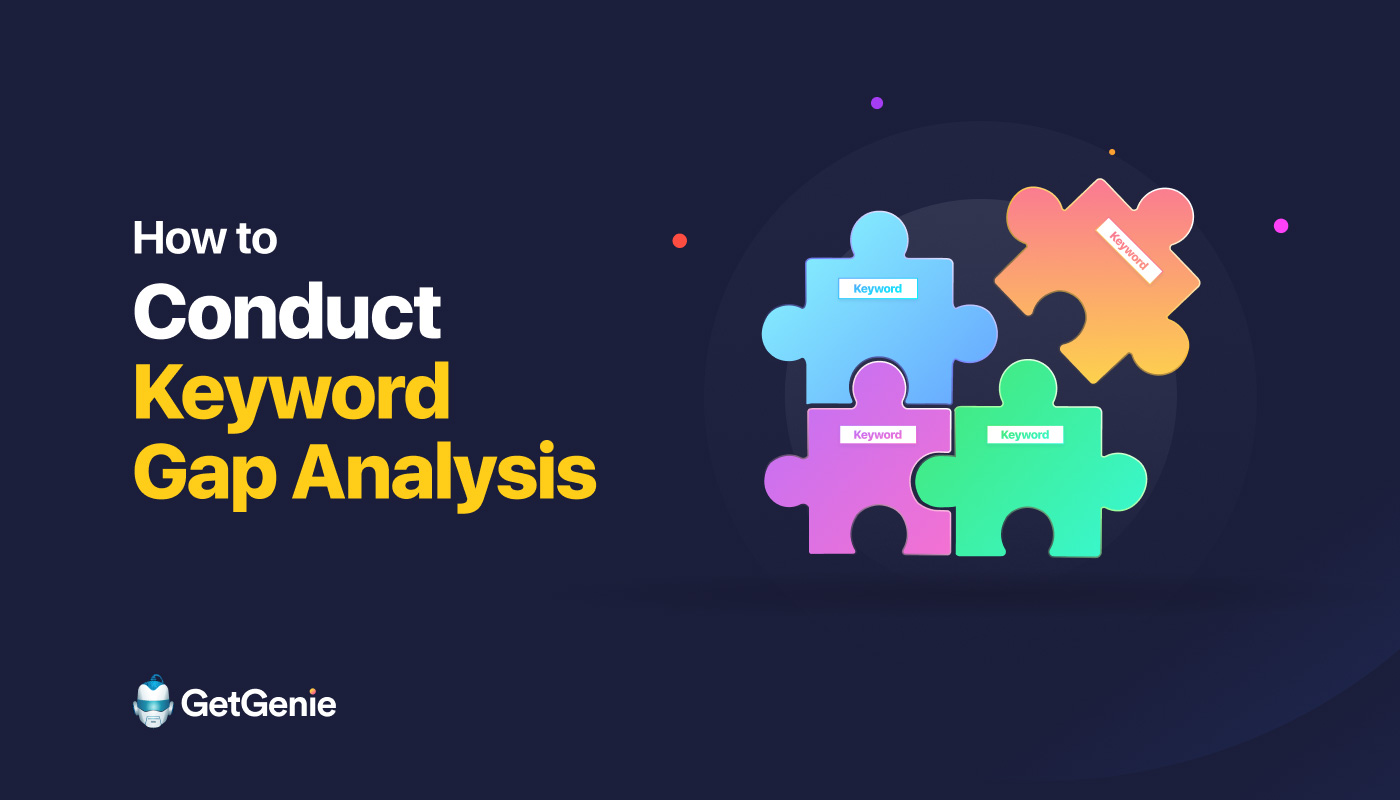
Struggling to find the high-impact keywords your competitors are ranking for manually?
Yeah, analyzing keyword gaps manually takes hours. You juggle spreadsheets, multiple tools, and endless lists, and even then, insights can be incomplete or outdated.
With AI magic, you can uncover untapped keyword opportunities, see exactly where your competitors are winning, and focus on what truly matters. It will let you save time, work smarter, and focus on the keywords that will actually drive traffic, rankings, and growth.
Typically, keyword gap research involves:
Listing of competitors’ keywords 👉 keyword comparison 👉 finding the missing keywords
What is keyword gap analysis?
The keyword gap analysis is a strategic process of identifying keywords that your competitors are ranking, but you are missing out on.
Let’s say you own a bookstore. To get more customers and improve sales, you need to have the high-demanding books in your store.
To do so, you can collect the catalogs of your nearby bookstores. Then compare them with your catalog and find out which books are missing from your inventory. The process is quite the same for keyword gap analysis.
Keyword gap analysis is more like reverse engineering for keyword optimization.
The competitive keyword gap analysis can help you identify new opportunities to improve your rankings and drive more traffic to your website.
This gives you a broad understanding of the search terms and phrases that are relevant to your niche.
Keyword gap analysis vs regular keyword research
Regular keyword analysis is about finding relevant keywords from search engine data. But keyword gap analysis helps you find keywords that could improve your overall SEO strategy.
It’s a way of identifying gaps in your current keyword list compared to competitors. More like spotting the missing pieces in your current keyword list.
Here is how keyword research and keyword gap analysis differ from each other:
Keyword Analysis | Keyword Gap Analysis | |
|---|---|---|
| Focus | Finding relevant keywords. | Comparing the keywords with competitors. |
| Objective | To find relevant keywords and understand the search intent and competitiveness. | To identify missed opportunities on keywords that competitors are ranking. |
| Methods | Analyzing relevancy, gathering data on keyword search volume and difficulty. | Listing competitors’ keywords, comparing with own keywords, and finding missing keywords. |
How to do keyword gap analysis
The competitive keyword gap analysis involves running a thorough analysis of competitors’ keywords. It helps identify opportunities for improvement and discover keywords you may not be targeting. Here’s a step-by-step guide on how to do keyword gap analysis:
Step 1: Compile a list of your keywords
First of all, gather your own list of keywords. If you already have a keyword list that’s great. If you don’t, use tools like Google Analytics, Google Search Console, or SEO platforms to get a keyword report of your website.
Step 2: Identify your main competitors
Now you have to conduct a competitor keyword analysis. To begin, identify your main competitors.
You can use the search engine data to identify competitors. Enter your targeted keyword on the search engine. From the SERP (search engine result page), pick the top 4 or 5 top results. These are the websites or web pages you’ll compare your keywords against.
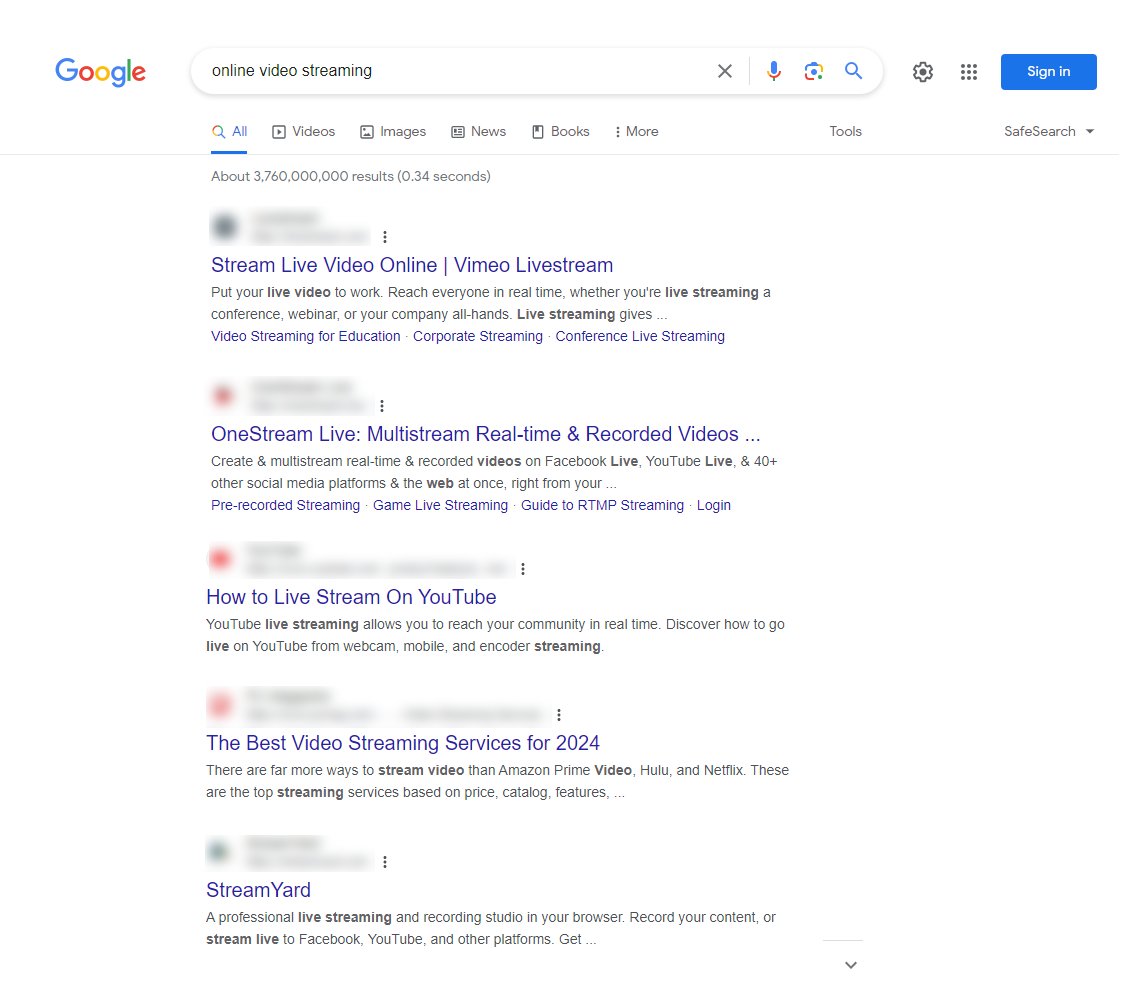
Besides, tools like GetGenie can provide thorough competitor analysis. Just enter your search term in the keyword field and Analyze Keyword. Then you’ll have the detailed competitor analysis under the “competitor” tab. Pick your competitor from this list.
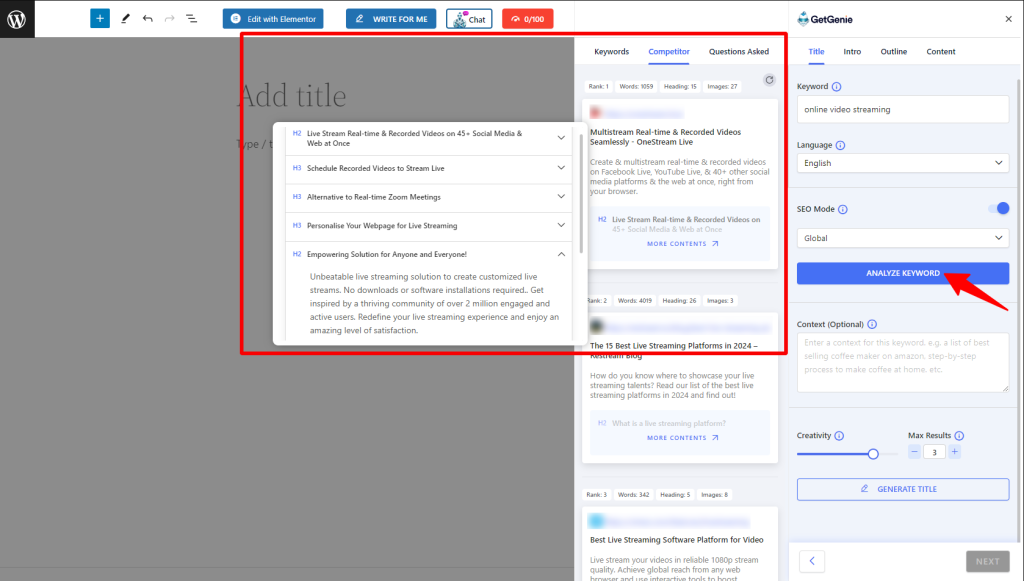
To learn more about it, here is 👉 how to do competitor analysis with GetGenie AI.
Step 3: Analyze and compare your competitors’ keywords
Then comes analyzing the keywords of your competitors. You can manually inspect your competitors’ websites to identify keywords. You can predict their keywords from their meta tags, titles, headings, and content. However, this is only a prediction-based process and you can only identify only a handful of keywords.
Another option is using a competitor and keyword gap analysis tool. An advanced tool can provide a more detailed and precise analysis of your competitor’s keywords.
For example, we are using GetGenie to do an advanced keyword gap analysis using the power of artificial intelligence.
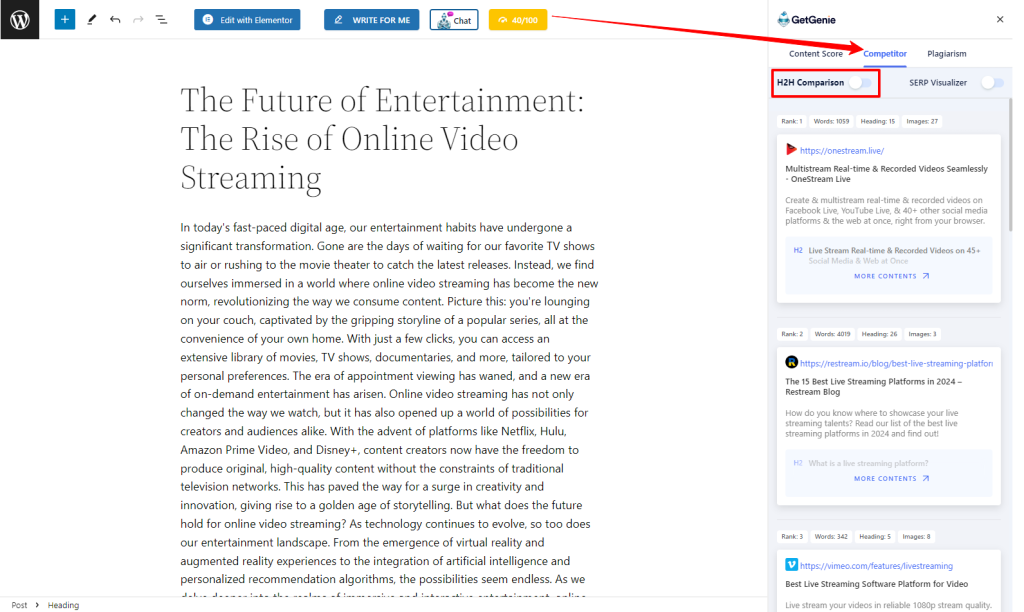
When you write content with GetGenie, it provides a content score along with a competitive gap analysis and plagiarism report. To get the keyword gap analysis:
- Click on the “content meter”.
- Switch to the Competitor tab.
- Toggle the H2H Comparison to enable.
Here, H2H (head-to-head) comparison is a process that compares your content with top content based on a list of NLP-powered keywords. As shown in the following image, it provides a list of NLP keywords. Then it shows how many times those keywords are used by the top 10 competitors in the Google Rank.
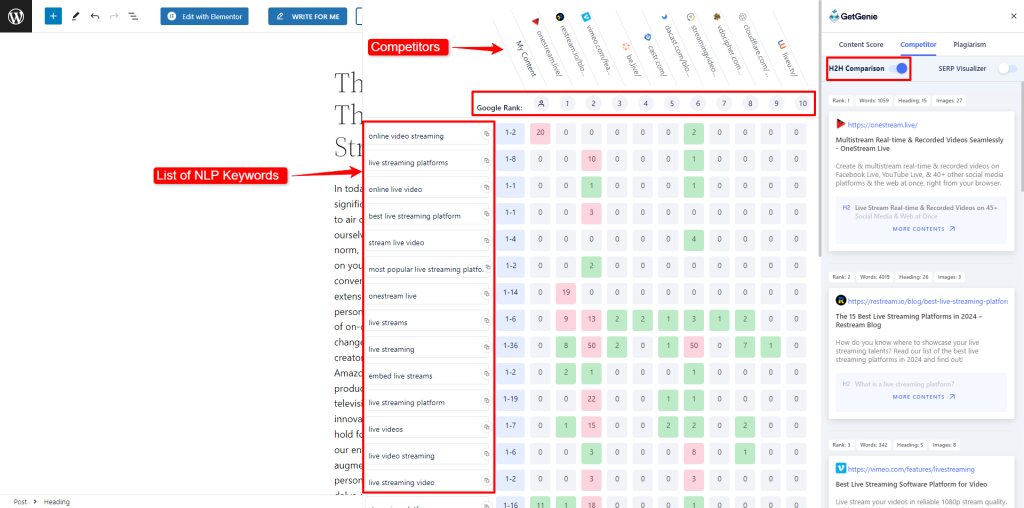
Now you can see a table of numbers in the head-to-head comparison. Don’t get puzzled by this. We’ll explain how it works.
The rightmost column includes the list of keywords. The column next to it shows how many times a keyword should ideally be used in the content. After that, the column labeled “My Content” shows the count of each keyword used in your content.
For example, this graph shows that you have used the “keyword online video streaming” 20 times in the content.
The rest of the columns display competitors’ keyword counts. It shows which keywords are used and how many times they are used in each content ranking from 1 to 10 in Google search results.
In this graph, the color indicates the usage of the keywords.
- Red color means the keyword has been overused.
- Green says keywords are used within the range.
This simplifies your workflow of competitive gap analysis, starting from identifying keywords to competitors’ keyword analysis.

Step 4: Identify gaps and opportunities
This H2H comparison gives a complete overview of keyword gap analysis. You can compare your content with your competitors’ keywords at a glance.
Now it’s time to extract the information from this keyword data. Take a look at the keyword “live streaming”. It’s been heavily used by almost all your competitors. So you can consider optimizing this keyword in your content.
In terms of keyword optimization, pick the keywords that match the intent of your target audience. Moreover, focus on keywords that align with your content strategy and have reasonable search traffic.
It’s Your Turn
Remember, keyword gap analysis isn’t a one-time task, it’s an ongoing process that requires regular review and adaptation.
When you do it with AI tools, you can simplify the process, skip multiple steps, and make informed decisions swiftly.
Also, AI-powered tools in keyword gap analysis can be your strategic ally to find high-intent keywords that you missed due to limited research, scattered data, or otherwise.

